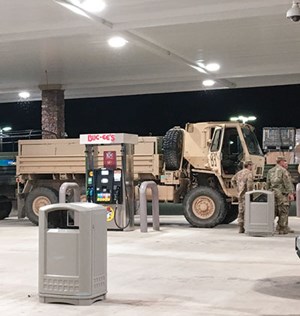First Oil
This September issue of World Oil now in your hands is the product of a rather abnormal monthly process caused by an extremely ill-mannered fellow named Harvey. That’s Hurricane Harvey, to be specific, who slammed the Texas coast, overstayed his visit by several days, and also provided an epic moment in Texas/U.S. history.
The approaching storm. After trekking from the eastern Atlantic to the Yucatan Peninsula as an unremarkable tropical storm, a deteriorated Harvey on Aug. 22 began a 72-hr regeneration, in the far southern Gulf of Mexico, from tropical wave all the way to Category 4 hurricane, on late Aug. 25. Simultaneously, forecasters began pinpointing Harvey’s landfall as being near Rockport, Texas, northeast of Corpus Christi.
Forecasters’ advisory about Harvey’s rainfall later proved to be precognitive, setting the stage for the great story that unfolded from Aug. 25 into Aug. 30. Forecasters said that Harvey would stall and meander over Southeast Texas for several days, producing extremely heavy, excessive rainfall that could bring devastating flooding to Houston, Galveston, Victoria, etc. Remarkably, Houston’s mayor did not call for any evacuations.
Landfall and the deluge. Harvey made landfall at San Jose Island, late on Aug. 25, and again at Rockport, shredding that town and bringing significant damage to the Corpus Christi area. But then, as forecasters had predicted, Harvey began his multi-day meandering across Southeast Texas, even going back into the Gulf before making a third landfall at Cameron, La., on Aug. 30. During that stumbling trek, Harvey piled up impressive rainfall amounts in the Houston area, totaling 25 inches to up to 50 inches. Many places received a half-year’s to a year’s worth of rain in just four to five days.

Suddenly, thousands of people were trapped by rising water, some in places that had never flooded before. Responding to their plight, hundreds upon hundreds of citizen volunteers showed up to work alongside fire and police responders, and National Guard troops, and put boats and rafts into the floodwaters, picking up residents from flooded homes and taking them to safety. Other volunteers performed a variety of other tasks. These volunteers came in from other parts of Texas and Louisiana, and disparate parts of the U.S. Over several days, the Great Houston Boatlift showed the nation how neighbors and strangers could work together, without regard to political affiliation, ethnicity, economic status or any other demographic category. In this era of massively polarized politics, it was a refreshing sight.
The aftermath. By Wednesday, Aug. 30, the rain had stopped in Houston, but the challenges faced by homeowners will go on for months to come. Unfortunately, in our own company, Gulf Publishing, several colleagues did see their homes get flooded. But be assured that the company is doing all it can to assist our friends in their time of need.
On the positive side, local, state and federal officials have worked well together. My wife and I saw the rapid deployment of National Guard troops, when we drove back to Houston on Aug. 30 after spending five nights some 200 mi north/northwestward, to wait out the storm. At a large truck/auto stop, 40 mi from Houston, we saw troops fueling their vehicles (see photo on this page), enroute to Beaumont. Speaking of gasoline, as many as 10 of 16 refineries along the Gulf Coast were still shut down on Sept. 1, although most re-started soon after, or were in the process of getting back up and running.
Yes, parts of Houston are already back on their feet. Yet, significant areas of town will remain problems for months, if not years. And some questions will need to be answered: 1) Why did Houston’s mayor not call for a selective evacuation of flood-prone areas; and 2) Has Harvey ended the decades-long “go-go” attitude of the city and Harris County, which countenanced growth at any cost, regardless of sustainability? ![]()



